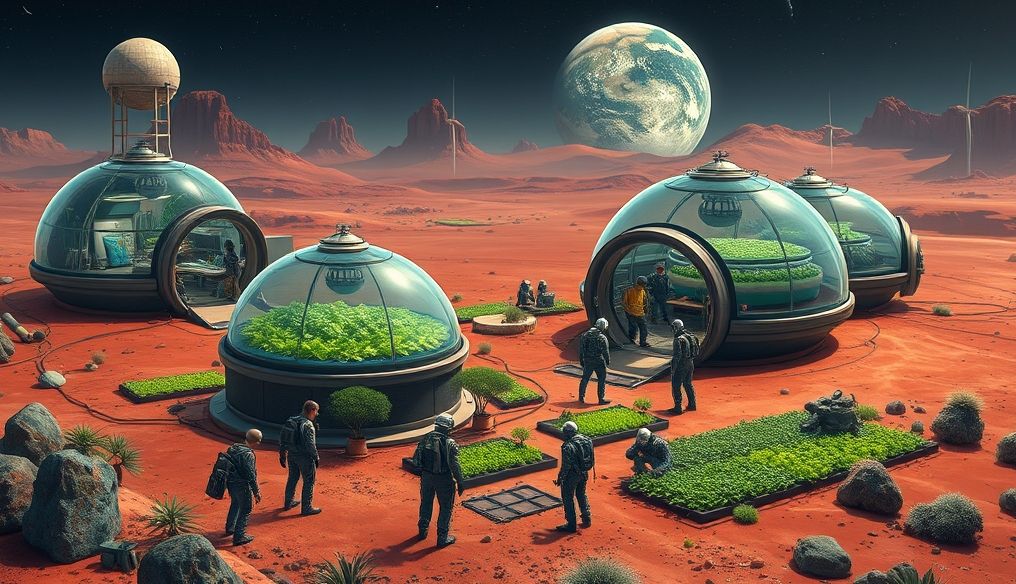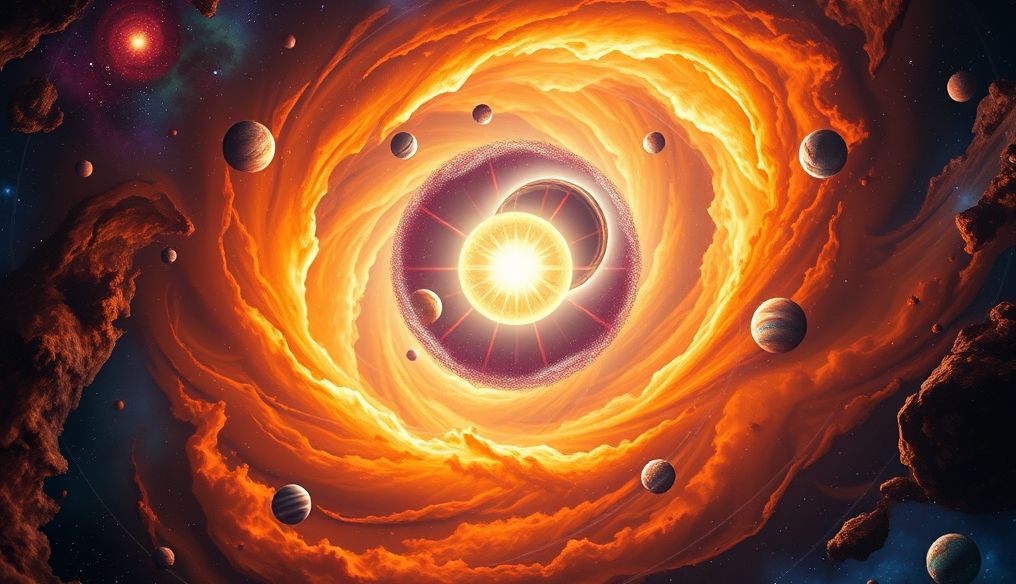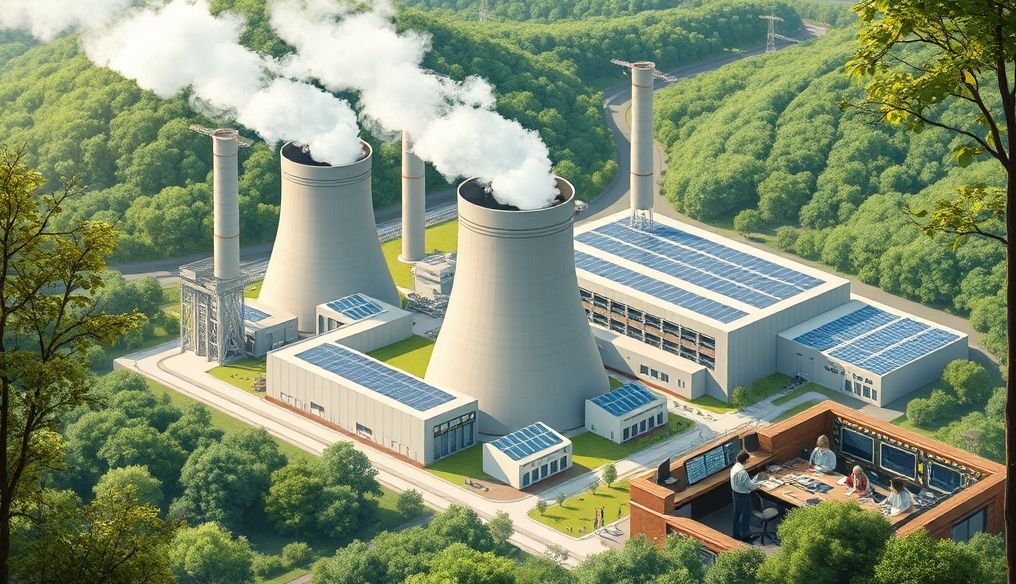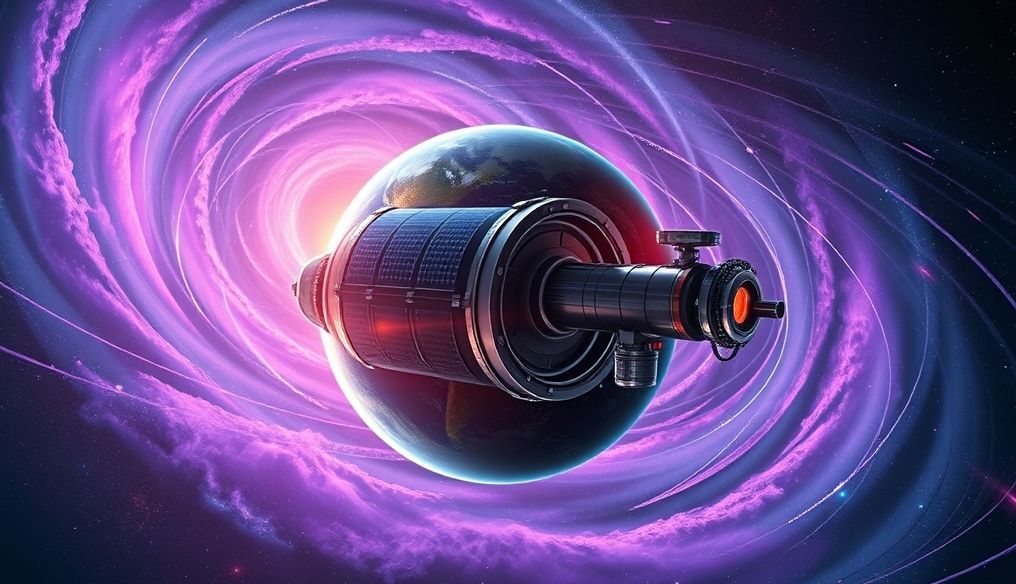Is Living on Mars in the Near Future Really Possible?
Mars has long been a fascinating destination for humanity, representing both a challenge and an opportunity for settlement beyond Earth. With continuous technological advancements, the dream of living on Mars is closer than ever. But, are we really prepared to face the immense challenges posed by this ambitious mission?
Chapter 1: The Allure of Mars - Why Do We Care About Colonization?
Mars, known as the Red Planet, interests scientists and explorers for several reasons:
- Search for Life: Mars may have harbored microbial life in the past, and perhaps still does.
- Human Settlement: Mars represents an opportunity to expand the reach of the human race and ensure its survival in the event of a disaster on Earth.
- Resources: Mars contains valuable resources such as frozen water and minerals that can be used in the future.
- Scientific Curiosity: Studying Mars helps us better understand the evolution of planets and the solar system.
But these reasons are not without their challenges; living on Mars is not a walk in space.
Chapter 2: Health and Environmental Challenges of Colonizing Mars
The Martian environment is harsh and inhospitable to human life. Here are some of the main challenges:
2.1. Cosmic Radiation
Mars lacks a strong magnetic field and a thick atmosphere, exposing it to harmful cosmic radiation. Long-term exposure to radiation increases the risk of cancer and other diseases. Solutions must be developed to protect against radiation, such as building underground habitats or using protective shields.
2.2. Low Gravity
Mars' gravity is about 38% of Earth's gravity. The long-term effects of low gravity on human health are not fully known, but may include loss of bone density, muscle weakness, and cardiovascular problems. Extensive studies and countermeasures, such as regular exercise, are needed.
2.3. Thin Atmosphere
The Martian atmosphere is very thin and consists mainly of carbon dioxide, making it unbreathable. Closed environments equipped with life support systems must be provided to produce oxygen and regulate temperature and pressure. Technologies to extract oxygen from Martian resources must also be developed.
2.4. Extreme Temperature
Temperatures on Mars range from -140 degrees Celsius to 30 degrees Celsius. These extreme fluctuations require well-insulated housing and reliable heating and cooling systems.
2.5. Water Scarcity
Although there is frozen water on Mars, obtaining and processing it for human consumption is a challenge. Efficient technologies must be developed to extract water from ice and purify it.
Chapter 3: Technology Needed for Colonizing Mars
Living on Mars requires the development of advanced technologies in multiple areas:
3.1. Life Support Systems
Life support systems must be able to provide oxygen, water, food, and manage waste sustainably. Hydroponics can be used to produce food in closed environments. Water recycling technologies can also be used to reduce reliance on external resources.
3.2. Martian Habitats
Martian habitats must be able to withstand cosmic radiation, extreme temperatures, and harsh weather conditions. Local Martian materials, such as soil and rocks, can be used to build habitats using 3D printing technologies.
3.3. Power Generation
Solar energy is a potential energy source on Mars, but it may be insufficient during dust storms. Small nuclear reactors can be used to provide reliable and sustainable energy.
3.4. Transportation
Spacecraft capable of transporting humans and equipment to Mars safely and efficiently must be developed. Martian vehicles must also be developed to navigate the planet's surface.
3.5. Communications
Sending and receiving messages between Earth and Mars takes between 4 and 24 minutes. This time delay poses a challenge for real-time communication. Reliable communication systems capable of handling this delay must be developed.
Chapter 4: Food and Nutrition in a Martian Environment
The issue of providing sustainable food is a crucial challenge. Here are some potential solutions:
4.1. Hydroponics
Hydroponics, which is growing plants without soil using nutrient solutions, can be an effective solution for producing food in closed environments on Mars. Vegetables, fruits, and herbs can be grown in these systems.
4.2. Insect Farming
Insects are a rich source of protein and can be farmed very efficiently. Insects can be used as food for humans or as animal feed.
4.3. Processed Foods
Foods can be manufactured from Martian resources or from food materials brought from Earth. These foods must be nutritious and palatable.
Chapter 5: Psychological and Social Aspects of Life on Mars
Living in an isolated and dangerous environment on Mars can have a significant impact on the mental and social health of colonists. Here are some considerations:
5.1. Isolation and Loneliness
Colonists will live in isolation from Earth and the rest of humanity. Psychological and social support must be provided to help overcome feelings of loneliness and isolation.
5.2. Conflict and Cooperation
Colonists must be able to cooperate and resolve conflicts peacefully. Individuals must be carefully selected and trained in teamwork and problem-solving.
5.3. Boredom and Routine
Life on Mars can become routine and boring. Recreational and educational activities must be provided to stimulate colonists and prevent boredom.
Chapter 6: Economic and Political Costs of Colonizing Mars
Colonizing Mars is a very expensive project and requires huge investments from governments and private companies. Here are some considerations:
6.1. Funding
The necessary funding must be provided to develop the technology, build the infrastructure, and transport humans and equipment to Mars. Funding can be obtained from multiple sources, such as taxes, private investments, and international partnerships.
6.2. Politics
A legal and political framework must be established to regulate activities on Mars and define responsibilities and rights. Potential conflicts over resources and land must also be resolved.
Chapter 7: Ethical and Philosophical Risks of Colonizing Mars
Colonizing Mars raises important ethical and philosophical questions:
7.1. Pollution
Measures must be taken to prevent pollution of the Martian environment by terrestrial organisms. Pollution can alter the Martian environment and hinder the search for native life.
7.2. Exploitation
It must be ensured that Martian resources are not exploited unsustainably. Colonizing Mars should benefit all of humanity and not just a few individuals or companies.
7.3. Sovereignty
Who owns Mars? Rules must be established to determine sovereignty over Mars and prevent conflicts over land and resources.
Chapter 8: The Future of Mars Colonization - A Look Ahead
Despite the immense challenges, colonizing Mars remains an ambitious and possible goal. With continuous technological advancements, we can overcome many of the obstacles and achieve the dream of living on the Red Planet. We must continue to research, develop, and invest in this area to ensure a bright future for humanity.
In conclusion: Living on Mars is not just a scientific dream, but a challenge that tests our abilities as humans to innovate, adapt, and cooperate. If we succeed in achieving this goal, we will have taken a big step towards a better and more sustainable future for all of humanity.




